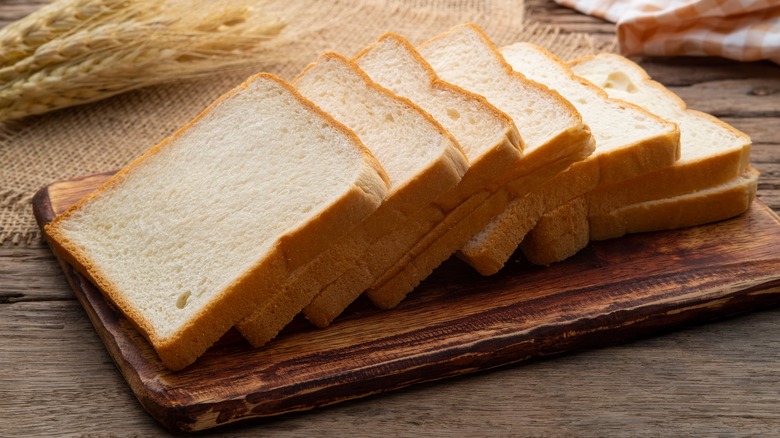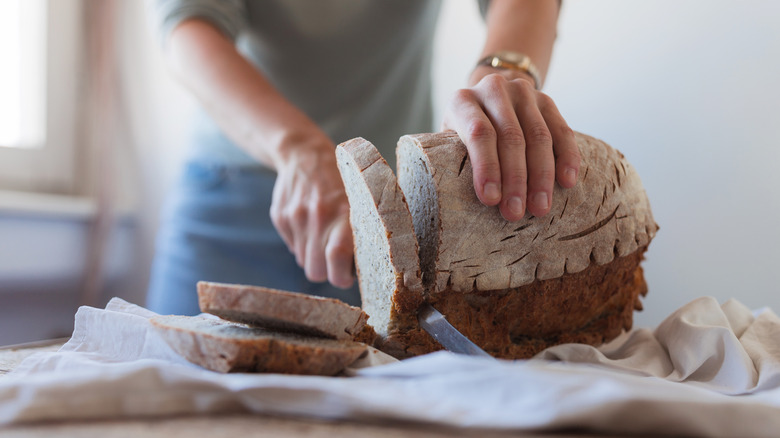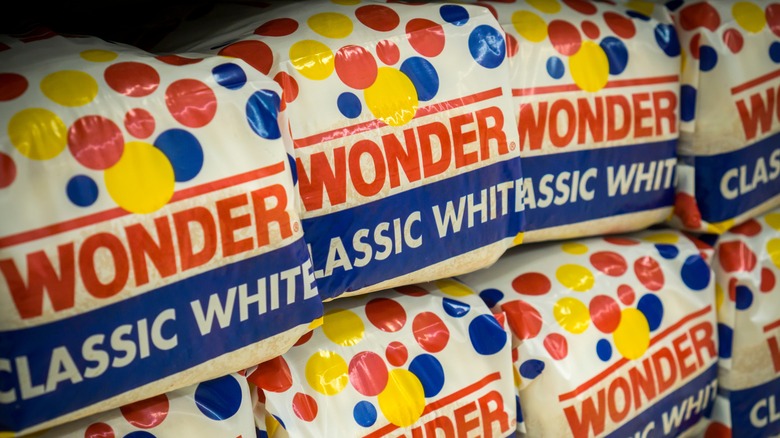Why Sliced Bread Was Banned In World War II
The resources required to produce sliced bread were considered so vital to military efforts during World War II that the product was banned — yes, really. Commodities including meats, sugar, milk, and coffee, as well as products like canned fish, culinary fats, and cheese were restricted. Similarly, materials such as nylon, wool, and steel were also limited. In 1943, sliced bread joined the list of prohibited products due to the wheat used in its dough, the steel in the industrial slicing machines, and the wax paper for wrapping the loaves.
Despite the fact that sliced bread had not been on the market for long — less than 20 years — it was already hugely popular. The troubled origins of sliced bread include a fire that destroyed the early blueprints for the machine, as well as initial public skepticism. However, both challenges were overshadowed as the product gained traction. Packaged Wonder Bread debuted in 1930, and by 1933, sliced bread surpassed its unsliced counterpart in popularity. The innovation was so well-received that it altered American eating habits, with people consuming more bread due to its newfound convenience.
What were the reactions to the sliced bread ban?
People were dismayed by the ban. In 1943, Time magazine even humorously lamented the need to revert to traditional serrated knives, remarking, "Then came grief, cussing, lopsided slices which even the toaster refused, often a mad dash to the corner bakery for rolls. But most housewives sawed, grimly on — this war was getting pretty awful."
While it might seem like a trivial grievance on the surface, sliced bread was a significant time-saver. This was a period when women's domestic labor was both expected and undervalued. Concurrently, many women were entering the workforce in droves to compensate for wartime staffing shortfalls. With many men deployed, women bore the double burden of both home responsibilities and workplace duties.
Ramen noodle and frozen pizza lovers can all attest to the value of convenience foods, especially when juggling multiple responsibilities. Sliced bread was no exception — it stood as a hugely popular, time-saving item that enabled busy women to more efficiently prepare meals for themselves and their families.
How long did the sliced bread ban last?
The ban was short-lived, lasting less than two months. The American appetite for sliced bread was insatiable, and the prohibition introduced additional complications. Although bakeries already equipped with bread-slicing machines were allowed to continue using them, this decision sparked considerable backlash from those bakeries lacking the machinery.
The initial expectation was that by halting the production of industrial bread slicers, around 100 tons of alloy steel would be conserved. However, Secretary of Agriculture and head of the War Foods Administration, Claude R. Wickard — who was responsible for the sliced bread ban in the first place — admitted that the actual savings in terms of steel and wax paper proved to be minimal. Notably, he didn't acknowledge the myriad of complaints against the policy.
Interestingly, there wasn't even a significant shortage of wheat or wax paper during this period. Moreover, the steel required for the machines wasn't a pressing issue since the existing slicers had a long service life. It seems like the unpopular policy was misguided from the start.



